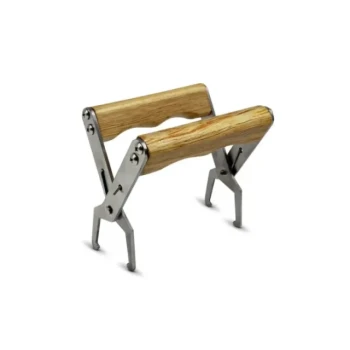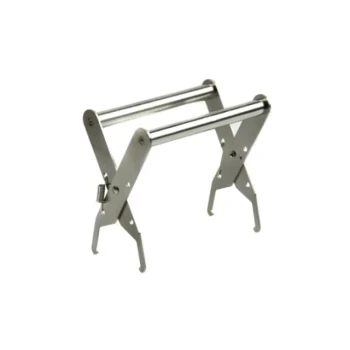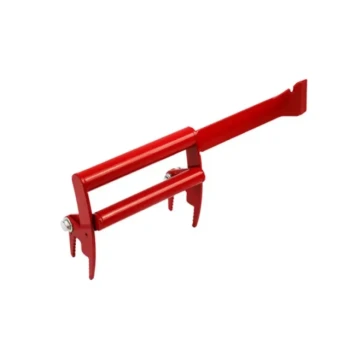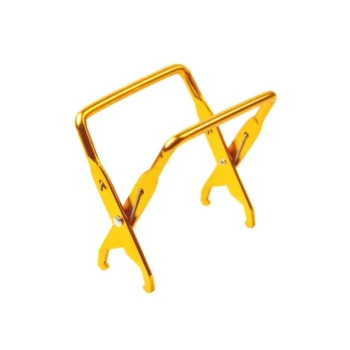Choosing between wooden and plastic beehive frames is a foundational decision in beekeeping that pits tradition against modern convenience. Wooden frames are the classic standard, offering flexibility to use various foundation types or none at all. Plastic frames are an all-in-one system, arriving with a built-in plastic foundation, demanding less preparation but offering no modularity.
The choice is not about which material is definitively "better," but which system aligns with your beekeeping philosophy. You are choosing between the natural adaptability of wood and the operational efficiency of plastic.
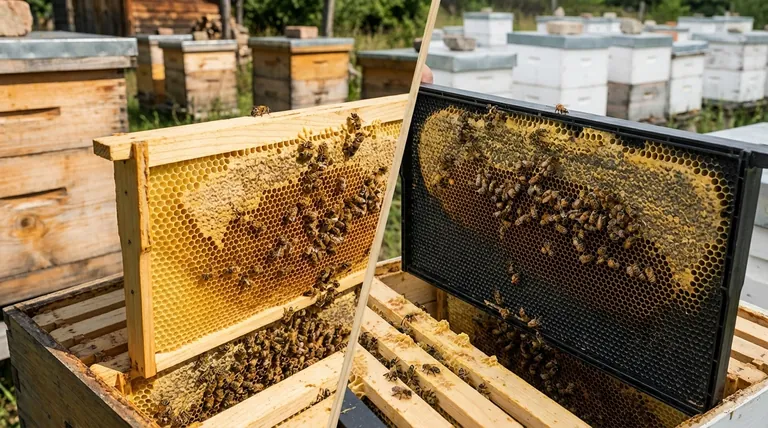
The Core Difference: Foundation and Flexibility
The most significant distinction between the two frame types is their relationship with the foundation—the sheet of wax or plastic that guides bees to build straight comb.
Wooden Frames: The Traditional, Adaptable Standard
Wooden frames are essentially empty rectangles. This design gives you complete control over what goes inside.
You can install pure beeswax foundation, plastic foundation coated in wax, or choose to go "foundationless," encouraging the bees to build their comb entirely naturally. This adaptability is their greatest strength.
Plastic Frames: The All-in-One System
Plastic frames are a single, molded unit that includes the frame and the foundation. This integrated design means they are ready to use almost immediately after purchase.
However, this convenience comes at the cost of flexibility. You cannot swap out the built-in plastic foundation for one made of pure wax, which can be a significant factor for some beekeepers.
Durability and Longevity in the Field
How a frame holds up to heat, handling, and honey extraction is a critical operational concern.
Bee Acceptance and Colony Health
A frame is useless if the bees won't use it. Each material presents a different initial experience for the colony.
The Natural Appeal of Wood and Wax
Bees readily accept wooden frames, especially when paired with a natural beeswax foundation. The material and scent are familiar, and they will begin drawing out comb on wax with little hesitation.
Bridging the Gap: Making Plastic Work for Bees
Bees do not naturally build on smooth plastic. To ensure they accept a plastic frame, you must apply a coat of melted beeswax. Without this step, bees will often ignore the plastic, choosing to build comb elsewhere if given the option.
Understanding the Trade-offs
Your decision ultimately comes down to weighing the advantages and disadvantages based on your specific goals, labor capacity, and budget.
Repair vs. Replace
Wooden frames are easily repaired. If a part breaks, it can be nailed, glued, or replaced.
Plastic frames are much harder to repair when broken. More importantly, they can warp irreparably in high heat or bend during the honey extraction process, rendering them unusable.
The Labor Factor: Assembly and Preparation
Wooden frames typically require assembly, which involves nailing and wiring the pieces together and then embedding a foundation. This requires time and a small degree of skill.
Plastic frames require minimal preparation. Besides applying a wax coating, they are ready to be placed directly into the hive, saving significant labor.
Environmental and Cost Considerations
Wooden frames are made from a renewable, biodegradable resource. They are often cheaper per unit if you assemble them yourself.
Plastic frames are a petroleum product and are less environmentally friendly. While potentially more expensive upfront, their low-maintenance nature may balance costs over time for large-scale operations.
Making the Right Choice for Your Apiary
You are not permanently locked into your choice. Many beekeepers experiment with both types to see what works best for their bees and their management style.
- If your primary focus is convenience and rapid deployment: Plastic frames offer a ready-to-use solution that minimizes assembly and prep time, ideal for large or commercial apiaries.
- If your primary focus is a natural, bee-centric approach: Wooden frames with natural beeswax foundation provide the most adaptable and readily accepted environment for your colony.
- If your primary focus is long-term durability and repairability: Wooden frames offer a more resilient and serviceable option, especially if you are concerned about warping in hot climates.
By understanding this fundamental trade-off between convenience and natural flexibility, you can select the frame that best serves both your goals and your bees.
Summary Table:
| Feature | Wooden Frames | Plastic Frames |
|---|---|---|
| Foundation Flexibility | Highly flexible; can use wax, plastic, or go foundationless | All-in-one system with built-in plastic foundation |
| Durability & Repairability | Easily repaired if broken; less prone to heat warping | Harder to repair; can warp in high heat or during extraction |
| Bee Acceptance | Readily accepted, especially with natural beeswax | Requires a coat of melted beeswax for initial acceptance |
| Labor & Preparation | Requires assembly and foundation installation | Minimal preparation; ready to use after wax coating |
| Cost & Environmental Impact | Lower upfront cost (if self-assembled); renewable resource | Higher upfront cost; petroleum-based product |
Optimize Your Beekeeping Operation with the Right Equipment
Choosing the right frames is crucial for the health of your bees and the efficiency of your operation. Whether you manage a large commercial apiary or are a distributor of beekeeping equipment, HONESTBEE is your trusted wholesale partner.
We supply durable, high-quality wooden and plastic beehive frames and a full range of beekeeping supplies designed to meet the demands of commercial-scale beekeeping.
Let us help you succeed:
- For Commercial Apiaries: Increase operational efficiency with equipment tailored for large-scale use.
- For Distributors: Source reliable, high-demand products for your customers.
Ready to discuss your specific needs and wholesale pricing? Contact HONESTBEE today to get the right equipment for your success.
Visual Guide

Related Products
- Plastic Bee Frame Beekeeping Hive Frames for Wholesale
- HONESTBEE Wired and Assembled Wooden Bee Frames Foundation for a Thriving Hive
- Food Grade Plastic bee Foundation for Bee Frames
- Durable Rubberized Comfort Handle Frame Grip
- Durable Galvanized Steel Frame Grip
People Also Ask
- What are the main types of frames available for beehives? Wood vs. Plastic for Your Apiary
- What is the role of oxalic acid in plants? A Key to Plant Defense and Internal Regulation
- What are the advantages of plastic frames for beehives? Boost Apiary Efficiency & Durability
- Can beekeepers switch between wooden and plastic frames? Optimize Your Hive's Performance
- Are plastic bee hive frames good? A Guide to Modern Durability vs. Natural Appeal





